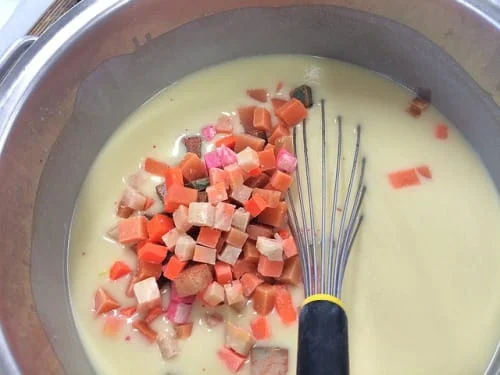Guide to Cold Process Soap Making
Welcome to the cold process soap-making undertaking. I presume that you already have read, researched, and browsed through a handful of soap-making resources. Let’s get started! Prepare your cold process soap recipes ahead of time and keep your work organized. Then prepare your ingredients, materials needed, and the equipment you will be using.
Now that you are ready. Let’s take up the cold process of making soap one by one. Here’s how:
1. Lye solution takes time to cool. Therefore, make your lye solution first and then set it aside. Do not forget to wear your gloves. It is best to be cautious when performing the process of cold soap making.
2. Place your measuring glass on top of your weighing scale and zero out the weight first. The measurement found in your recipe excludes the mass of the glass. Start measuring your oils with accuracy. Weigh your liquid oils in a glass pitcher, while solid oils are in a soap pot.
3. Therefore, place the pot with the solid oils on the stove, heating it only over medium temperature. Melt the oils slowly and gently, stirring. Be alert to the heat. If it reaches 110 degrees, turn it off and continue stirring until the solid oils are completely melted. Once your oil pot is melted, add the liquid oils at room temperature to it. The temperature will lower itself. Add the lye water when the temperature goes down to 100 degrees. Be very attentive in following these instructions.
4. This is where the making of cold-processed soap begins. Your additives, such as fragrance oils and color, should be ready. Your tools should also be at hand, such as measuring cups, spoons, whisks, and spatulas. Hold on to your stick blender, and let’s get started. Now, add the lye water to your pot slowly. You notice that the oils in the soap pot will get murky. Now, using your blender, combine the lye water and the oils. Remember to keep off the electricity from your blender; do the blending manually for now. Place the pitcher aside for blending.
5. A Chemical reaction will manifest upon mixing the lye with your oil. Turn your blender on and off for 3 to 5 seconds while mixing the lye, water, and oil, followed by manual stirring. Do this until they are mixed. You are nearing the tracepoint.
6. When the mixture has blended before it gets too thick, slowly pour in your additives (fragrance and essential oils). Stop using the stick blender and manually continue the stirring.
7. If you have more additives to add, such as flower petals, spices, or moisturizing oils, you may do so now by following the same method in number six. After that, start giving it a quick blend with your stick blender to ensure that it thoroughly mixed the oils and other additives before adding your colorant.
8. Add the color according to your desired result. You can choose to have a one-colored soap or a swirl effect on colored soap. It is up to you.
9. Your soap is now thick. Evenly pour your soap into the cold process soap mold. Use a spatula to scrape off all the soap. Smooth the top of the soap mold with a spatula. Set it aside in a warm place for curing.
10. Last, let the soap sit for about 24 hours to harden before removing it from the mold.
The next day you may cut your soap into desired sizes and let it cure for another two weeks.
Congratulations! You have just finished your first cold-process soap-making method.
